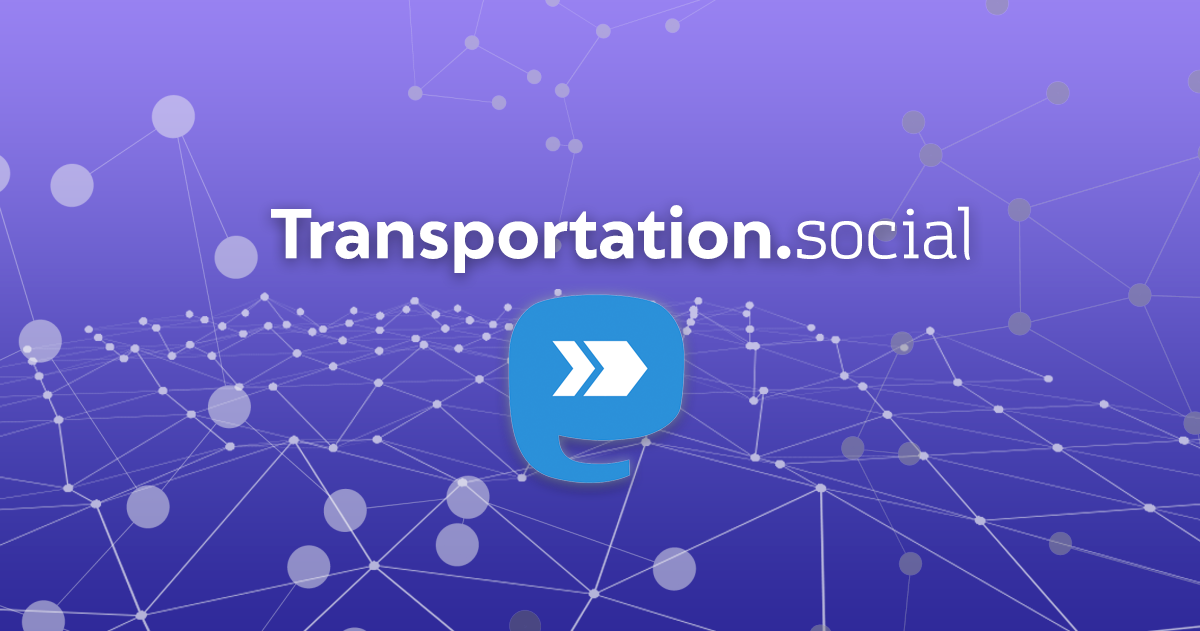#ITE (the Institute of Transportation Engineers) began recommending #RTOR (right turn on red) as a fuel saving measure in 1986. ITE rescinded that guidance in September 2019, writing:
"The existing [recommendation] fails to provide a sufficiently robust analysis of the impacts, especially with regards to the potential impacts on the safety of #pedestrians using #crosswalks."
ITE's full statement on rescinding the RTOR recommendation:
https://www.ite.org/pub/?id=B59F0054-B3AE-FD5C-81E5-62E18920B5DC
1/
Yet in most US states, turning right on a red light is still allowed by default.
There's no evidence #RTOR does what it was meant to do: save fuel.
There is evidence that it increases the risks to pedestrians even when (especially when) they are using crosswalks and following traffic signals.
There's widespread acknowledgment that our longstanding focus on traffic flow kills people.
Why are we still turning right on red? This is the lowest of the low hanging fruit. Ban #RTOR.
@ascentale yep, and we *still* have strident environmentalists claiming that having to wait for pedestrians is bad for the environment because it makes them burn more gas
@ascentale Much of today's "we mustn't do anything to cause congestion" thinking is rooted in the gas crisis of the 70s. Since then the spectre of congestion has been (misguidedly) attached to so many counterproductive urban transportation policies. It's a *very* handy boogeyman.
@DrTCombs
Urbanists need to reclaim congestion:
"Yes, the neighborhood was congested. It was congested with jobs, apartments, workers, shoppers, and businesses. Cities cannot function without congestion."
@ascentale
@DrTCombs @ascentale So much worry about congestion, so little support for trains, buses and other means of getting cars off the road.
@DrTCombs @ascentale Which begs the question of why a strident environmentalist is driving an internal combustion engine....
@BarbChamberlain
It very much does
@ascentale
@DrTCombs @ascentale new since the 70s: https://en.m.wikipedia.org/wiki/Start-stop_system
@DrTCombs Meanwhile, Alaska DOT still up here creating *new* death traps where motorists can bypass the light entirely, tripling the number of pedestrian crossings in any given direction. These intersections were just "improved" in the last couple years. And biking them is nearly impossible. "But look, we gave you 'refuge islands'." In hell traffic engineers spend eternity on the other side of the windshield from their worst designs. #CarCulture
@DrTCombs I'd like to see us introduce turn right on red here. As a country that drives on the left, it should introduce motorists to the fear and unpredictability that that we face when not in car.
I'm fully against introducing turn left on red.
@DrTCombs RTOR helps prevent vehicles from idling at a stop sign / stop light. The environmental impact of idling engines has been widely studied, and with those figures in mind RTOR makes great sense.
@DrTCombs Traffic lights need to do more to recognize when there is a danger and turn green if you can safely go. Self driving cars prove we can see cars, bikes and pedestrians (mostly), put the same technology on traffic lights and now we can save fuel by having it turn green before you arrive when it is safe and you have slowed down to a reasonable speed (something else that can be sensed - want to enforce speed limits, just ensure that someone who drives the limit has less red lights!). Many traffic lights around me have various barriers that a driver cannot see through/around easily so the cameras/sensors can be put where it drivers cannot see and so get a better understanding of what is going on.
@bluGill Cameras are actually still pretty bad at recognizing pedestrians though, whether they are on cars or on poles. And they are bad systematically, and they can be hacked. Clarifiying and simplifying the rules such as "red means don't go, always" would do a whole lot more to improve safety.
If traffic lights aren't in a location where drivers see them, that's a different problem that ought to be reported as an emergency.
Something I absolutely fail to understand : whenever I have to drive (which is very often), when I am waiting at an intersection, anyone standing on the corner waiting to cross, almost every single time, waits until the light has changed and crosses against the light.
In other words, they will wait, and wait, and wait, while the car traffic crosses the intersection in the direction they want to cross. Then, when the light has changed to allow car traffic in the cross-direction, they will start out into the intersection.
Now, I've crossed against a light plenty of times, when it was safe to do so (there are badly-timed lights near me that virtually demand this), but not like that. I'm at a loss.
@tsukkitsune This is not a thing I have encountered before, and is indeed perplexing.
However, people on foot will generally take whatever action they perceive to be the most rational response to their situation, so maybe there's more going on than is obvious from the road? I honestly don't know! Gotta be a reason though.

@DrTCombs I had no idea it was originally meant to save fuel.